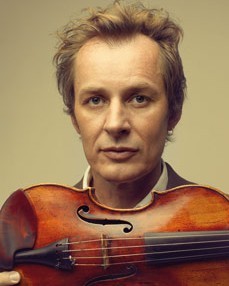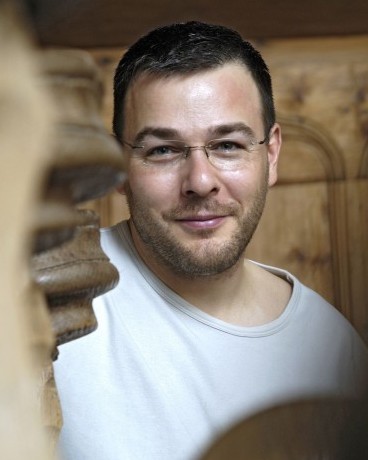On tonight's show:
Newman Center Presents

Charley anticipates tomorrow’s “Essential Graham: Classics from the Martha Graham Dance Company” at the Newman Center by airing a 2009 offering in the series from the Australian Chamber Orchestra.
Franz Joseph Haydn: Symphony No. 44 in E minor (Mourning)
George Frideric Handel:
“Va tacito e nascosto” from Giulio Cesare
“Dove sei? Amato bene!” from Rodelinda
“Se parla nel mio cor” from Giustino
“O Lord, whose mercies numberless” from Saul
“Aure, deh, per pietà” from Giulio Cesare & “Vivi tiranno!” from Rodelinda
Australian Chamber Orchestra
Richard Tognetti, violin & conductor
Andreas Scholl, countertenor
recorded 4/30/09
Franz Josef Haydn (1732-1809): Symphony No. 44 in E minor (Mourning)
I. Allegro con brio
II. Menuetto e Trio: Allegretto canone in diapason
III. Adagio—Presto
In the 1760s, Haydn entered what commentators call his Sturm und Drang (Storm and Stress) period. Conductor Raymond Leppard describes it as “the literary and musical parallel of the credo of nature over reason first set forth by Rousseau in 1751. In the field of music the effects of this philosophy showed themselves in a heightened subjectivity, an enlarging of the expressive scale by means of new orchestral tone colors, surprising dynamic effects, a new freedom of modulation, and frequent use of minor tonality.”
The Symphony No. 44 can be counted among these Sturm and Drang works. Probably dating from around 1772, the Symphony is subtitled “Mourning” because its third movement was a favorite of Haydn’s, who requested that it be played at his funeral. According to C. F. Pohl, an early biographer, the work was performed in Berlin when Haydn died in 1809. Karl Geiringer implies that the title Mourning was even intended by Haydn himself as a lament for the “death of a hero.”
The great Haydn scholar H. C. Robbins Landon calls the Symphony “one of the greatest of Haydn’s Sturm und Drang productions…. Here Haydn finally achieved the form he had sought so long, for the emotional world of the sonata da chiesa (church sonata) was successfully transferred to the normal symphonic structure. Not quite normal, though, because Haydn shifts the weight, after the enormously powerful opening movement, to the slow movement but allows a breathing space by inserting the minuet in between. In overall balance, this Symphony is a miracle of judgment.”
The minuet, in the form of a canon, is, writes Landon, “a fantastic piece of contrapuntal prestidigitation.” He says the finale “carries things further than even the first movement would lead us to expect. The unison opening is tensely rhythmic, with those inserted silences that increase the power so effectively. Just as in the first movement, the first (seven) notes of the Finale prove to be essential.”
©2010 Charley Samson
